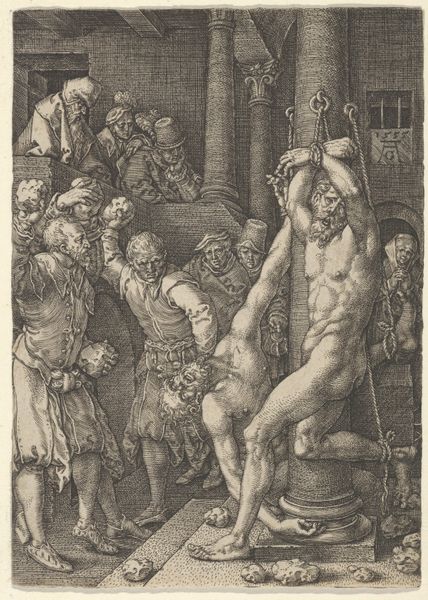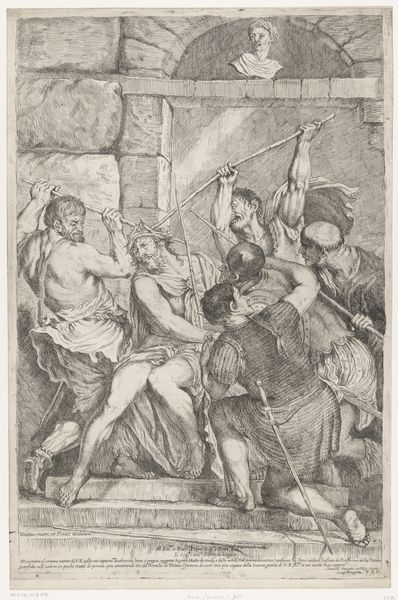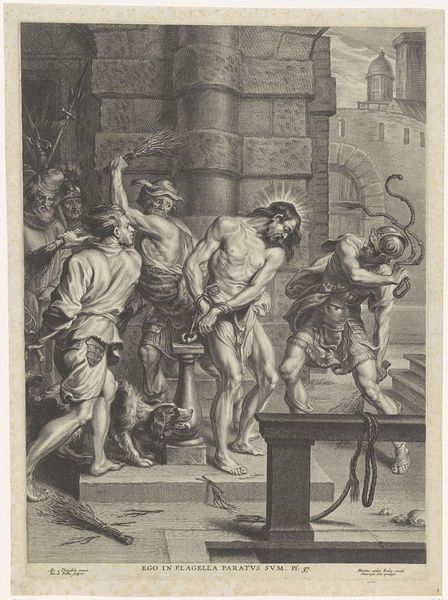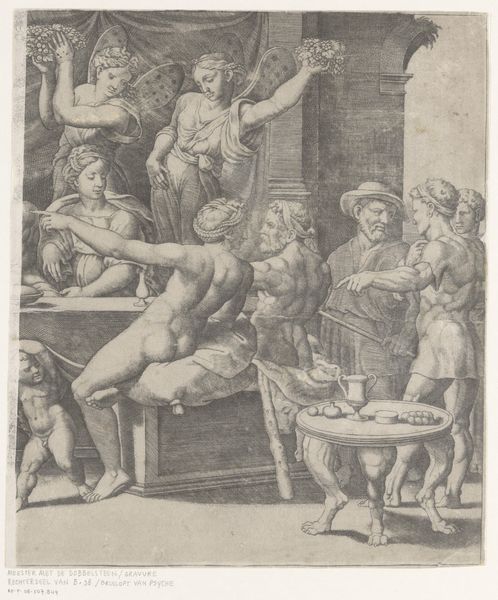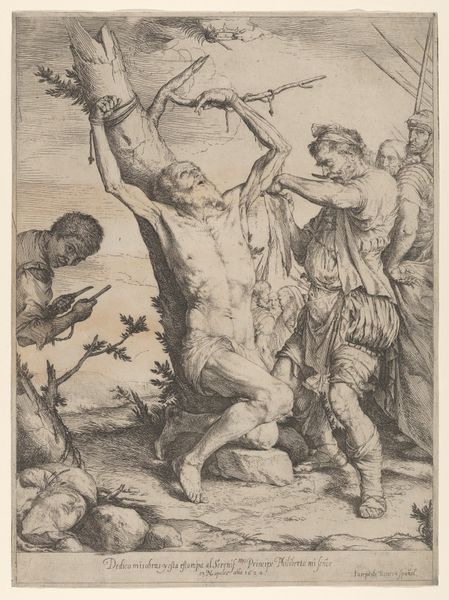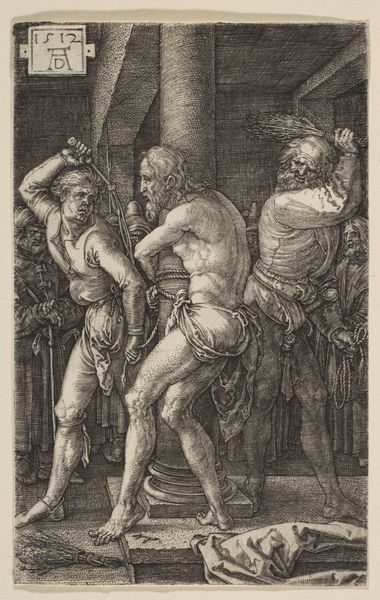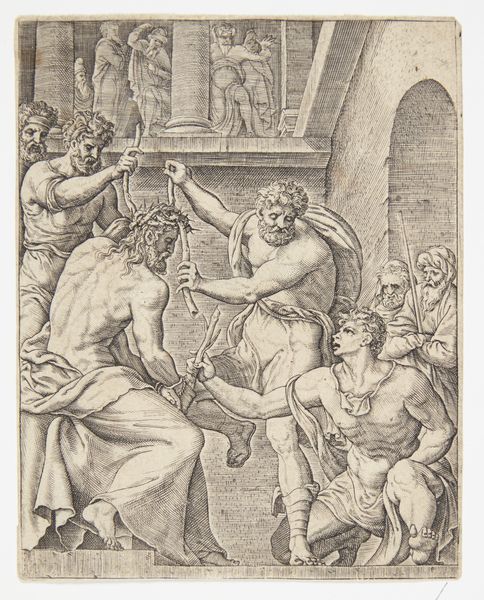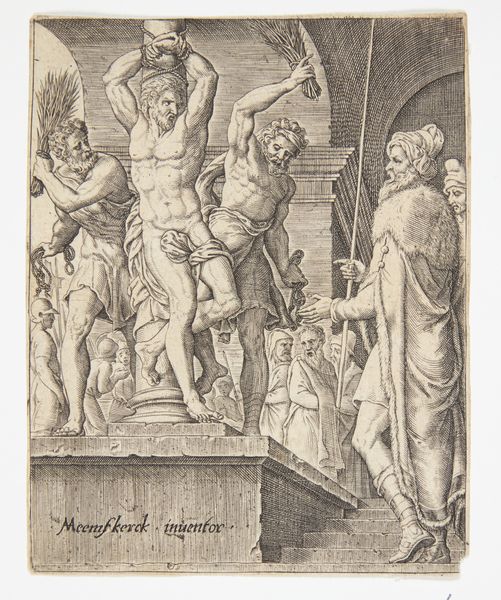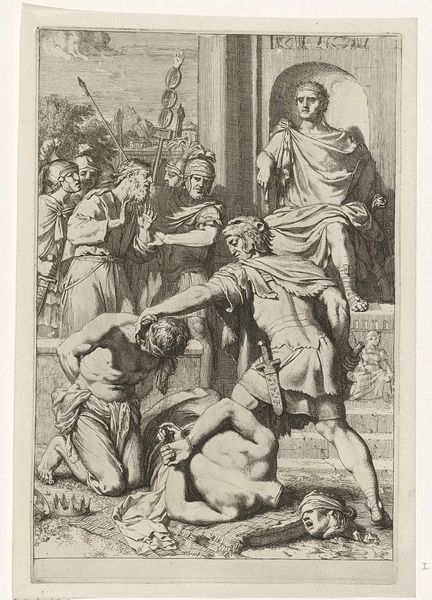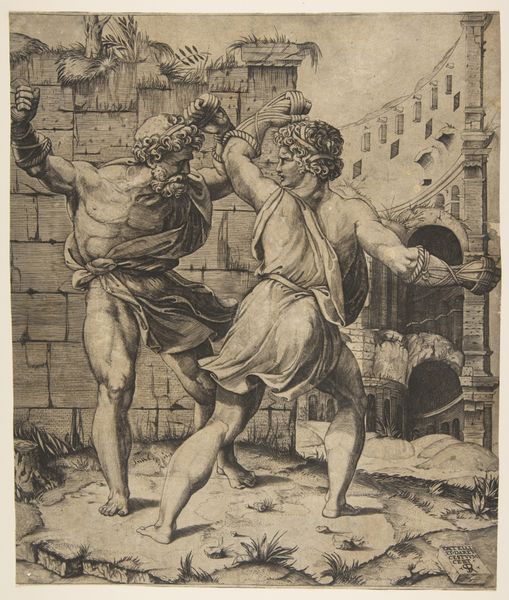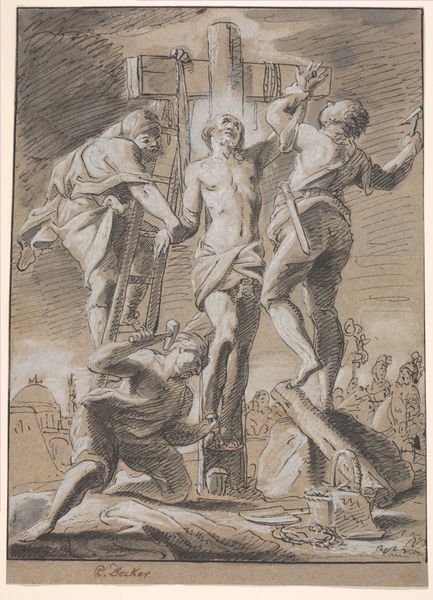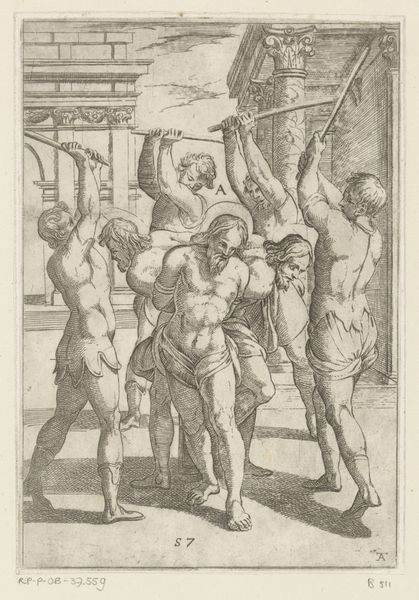
drawing, print, paper, ink, graphite, charcoal
#
drawing
#
baroque
# print
#
charcoal drawing
#
figuration
#
paper
#
ink
#
graphite
#
charcoal
#
history-painting
Dimensions: 369 × 266 mm
Copyright: Public Domain
Editor: Here we have an anonymous drawing entitled "Flagellation of Christ," dating from around the Baroque period. It’s rendered in ink, graphite, and charcoal on paper. There's a raw, visceral energy to it... the pain feels so palpable. What do you see when you look at this piece? Curator: I see the brutal mechanics of power at play, quite literally etched into the page. The artist’s choice of materials – the humble ink, graphite, charcoal, on readily available paper – is telling. It suggests a production that might not have been commissioned by the Church, a potentially subversive rendering using readily available material for wider distribution and consumption, in essence, a commodification of religious imagery. Editor: A commodification? That's interesting. So, you are less focused on the spiritual or religious narrative itself? Curator: Exactly. Consider the labor involved in creating this image. The repetitive strokes, the pressure applied to create the depth and shadows... it mimics the repetitive violence depicted. And consider the social context - were prints made? Were these sold for profit? Who had access to these images, and what power dynamic did they create or reinforce through its use and ownership? It removes the high art/craft boundary, making art more accessible. Editor: I see what you mean. The materials themselves tell a story about production, access, and the potential challenges to established authority, it makes art itself a tool for reinforcing a power struggle. Did the creation or consumption of works such as this help establish more progressive ideals by expanding people's access to challenging themes? Curator: It's certainly a valid line of inquiry! Considering the art, it does offer us a material insight to social production in the era of its creation and distribution. Editor: This perspective offers a whole new way to appreciate this artwork beyond its religious subject matter. I'll be sure to think of materials and labor when viewing art moving forward!
Comments
No comments
Be the first to comment and join the conversation on the ultimate creative platform.
